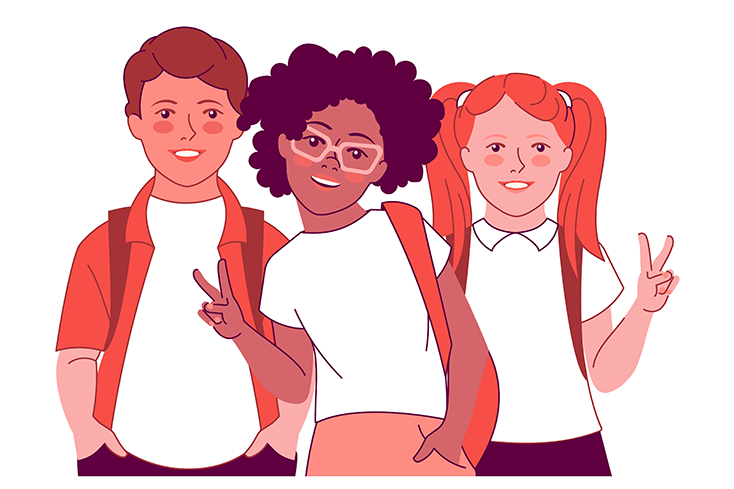October 06, 2023
By David Krasky

At the risk of showing my age, I preface this blog post by saying, "back when I was a kid, all we did was hang out with each other.” We'd go to the mall, play sports, hang out at each other’s houses and go home only when we had no other choice.
As a licensed school psychologist, I’ve noticed that young adults’ social experience is different now. Their connections are increasingly happening online, and they are consumed by academic and family pressures in their limited free time.
Unsurprisingly, then, according to the CDC, about 40% of children and teens are experiencing elevated rates of depression and sadness. Even scarier is that about 20% of high school students have reported thoughts of suicide.
It is difficult to point the finger to one specific factor for the rise in these numbers because it is most likely a combination of psychosocial and environmental factors: rise in social media usage, onset of a pandemic, greater school demands, family stress, etc. However, many of these factors are difficult to predict or control. One factor we can control is the quality and quantity of our children's connection to peers.
Looking at children and teens from an evolutionary perspective shows us that, for thousands of years, they have spent most of their free time with peers. Our brains are hardwired to depend on these interactions for our overall mental well-being.
As hard as it may be to prioritize social time, I believe that the benefits greatly outweigh the costs. Many parents have shown apprehensiveness about letting their children have sleepovers, go ride bikes with friends or stay out until dark because of their own anxieties; however, data has shown that if children know how to avoid danger and be safe, their chances of harm significantly decline.
On the other hand, some children may not want to leave the comfort of their bedrooms because they prefer the comfort of the technology (TikTok, YouTube, Netflix and gaming) available to them. This is where parents should set strict limits and demand their children get at least some unstructured face-to-face time with peers. Here are some easy ways to promote these interactions:
Children and teens need meaningful connections in their lives. To accomplish this, they need face-to-face opportunities with peers in non-school settings. Many things get in the way of accomplishing this —overscheduling, too much homework/studying, anxious parents — but it must become a priority if we want to see the rates of childhood and teen depression diminish.
David Krasky is a licensed school psychologist who has been working primarily in private practice for the past 14 years. He has had the opportunity to work directly with children, teens and young adults experiencing mild to severe symptoms of anxiety, depression, autism and ADHD. He himself has lived experience with mental illness; he lives with panic disorder and has experienced bouts of extreme post-traumatic stress and depression.
We’re always accepting submissions to the NAMI Blog! We feature the latest research, stories of recovery, ways to end stigma and strategies for living well with mental illness. Most importantly: We feature your voices.
LEARN MORENAMI HelpLine is available M-F, 10 a.m. – 10 p.m. ET. Call 800-950-6264,
text “NAMI” to 62640, or email. In a crisis, call or text 988 (24/7).